Le système immunitaire, un allié essentiel qu’il faut maîtriser pour rendre encore plus accessibles les traitements de thérapie génique. A Généthon, une quinzaine d’experts mobilisés pour mieux définir et maîtriser les interactions entre système immunitaire et vecteurs de thérapie génique.
Le système immunitaire a pour fonction de préserver l’intégrité de l’organisme en neutralisant les éléments qui viendraient à perturber trop fortement l’équilibre qu’il maintient avec son environnement. Il apprend à ne pas répondre contre les aliments que nous ingérons, ou les pollens que nous respirons, tout en gardant sa capacité à contrecarrer un pathogène devenant trop envahissant. Or, les gènes médicaments sont apportés aux cellules grâce à des transporteurs, des « vecteurs », d’origine virale. Ceci peut conduire le système immunitaire à se méprendre et à vouloir rejeter le traitement, limitant son efficacité thérapeutique et entrainant des effets adverses.
Les travaux menés depuis une vingtaine d’années ont permis d’affiner les traitements immunomodulateurs, capables de mieux contrôler ces effets délétères à l’encontre du traitement de thérapie génique tout en préservant la fonction protectrice essentielle du système immunitaire. De plus, ont été identifiés nombre de paramètres qui influent sur la survenue des réponses immunitaires, comme la constitution du vecteur médicament lui-même ou sa capacité à cibler tel ou tel tissu de l’organisme. C’est ainsi que dans certains essais cliniques, des bénéfices thérapeutiques au long cours, sur près d’une quinzaine d’années, ont pu être obtenus.
Néanmoins, des limites subsistent, telles que l’inéligibilité des patients possédant une immunité naturelle contre le vecteur ou développant une réponse dirigée contre le gène médicament, ou la possibilité de traiter plusieurs fois un jeune patient qui en aurait besoin.
A Généthon, un programme Immunologie
Conscient de l’enjeu essentiel que représente les réponses immunitaires pour la mise en place de traitements de thérapie génique sûrs et accessibles au plus grand nombre de patients, Généthon poursuit un programme Immunologie, dont les trois grands axes sont :
-l’identification de nouvelles voies d’immunomodulation permettant de surmonter les limites actuelles imposées par le système immunitaire,
-la meilleure caractérisation des interactions entre le système immunitaire et les vecteurs de transfert de gène,
-le suivi préclinique et clinique (biomarqueurs, immunomonitorage) des réponses immunes.
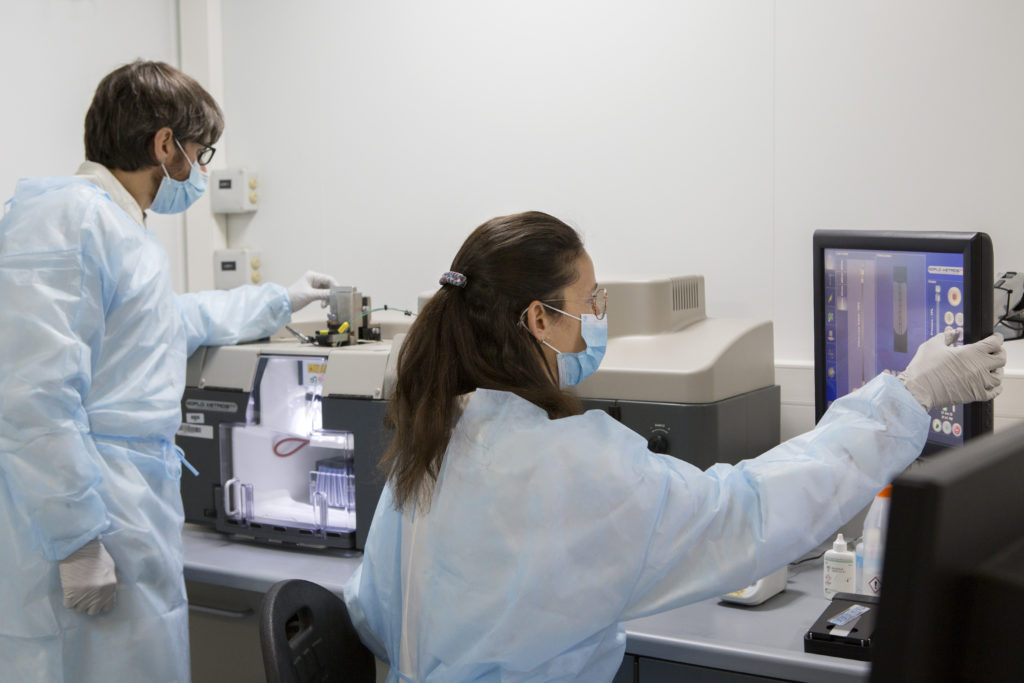
Répartis au sein de Généthon et/ou membres de l’UMR Inserm S951 – Integrare (équipe Immunologie et maladies du foie, équipe Immunologie et biothérapies), une quinzaine de personnes travaillent sur ce programme dédié à l’immunologie, dont des chercheurs, des postodoctorants, des techniciens et ingénieurs, ainsi que des étudiants en thèse.
Le programme bénéficie des plateformes/services de Généthon : 3 cytomètres (Cytoflex LX, Cytoflex S , Sony SP6800) ainsi qu’un trieur MoFlo Astrios EQ ; de nombreux appareils d’imagerie (confocal TCS SP8 Leica, AMNIS Image Stream…); immunohistochimie; production de vecteurs AAV et lentiviraux, ainsi que d’une animalerie gérée par la Génopole d’Evry, où Généthon possède plusieurs dizaines de lignées.
Ils nous soutiennent
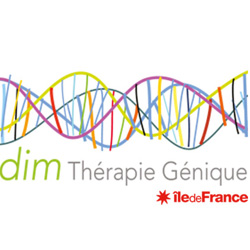
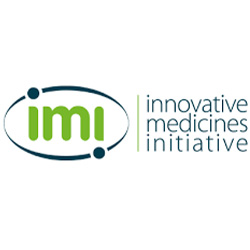
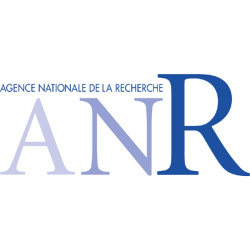
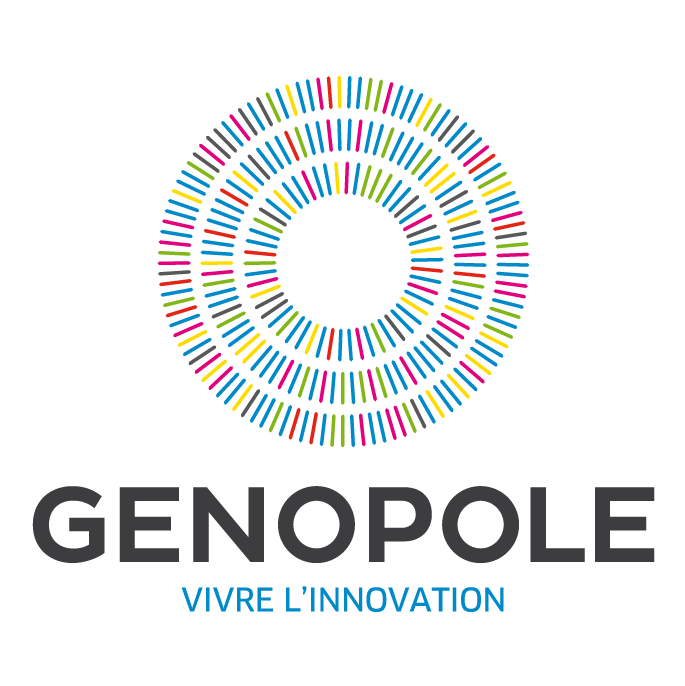
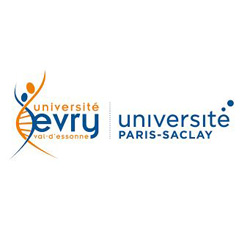

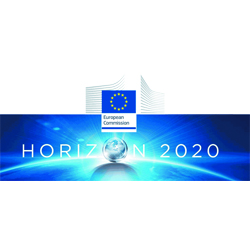
Publications récentes (2017-2022)
- Durable immunogenicity, adaptation to emerging variants, and low-dose efficacy of an AAV-based COVID-19 vaccine platform in macaques. N. Zabaleta, U. Bhatt, C. Hérate, P. Maisonnasse, J. Sanmiguel, C. Diop, S. Castore, R. Estelien, D. Li, N. Dereuddre-Bosquet, M. Cavarelli, A.S. Gallouët, Q. Pascal, T. Naninck, N. Kahlaoui, J. Lemaitre, F. Relouzat, G. Ronzitti, H.J. Thibaut, E. Montomoli, J.M. Wilson, R. Le Grand, and L.H. Vandenberghe. Mol Ther 2022. 30, 2952-2967.
- Neuropilin-1 cooperates with PD-1 in CD8(+) T cells predicting outcomes in melanoma patients treated with anti-PD1. J. Rossignol, Z. Belaid, G. Fouquet, F. Guillem, R. Rignault, P. Milpied, A. Renand, T. Coman, M. D’Aveni, M. Dussiot, E. Colin, J. Levy, C. Carvalho, N. Goudin, N. Cagnard, F. Côté, J. Babdor, K. Bhukhai, L. Polivka, A.E. Bigorgne, H. Halse, A. Marabelle, S. Mouraud, Y. Lepelletier, T.T. Maciel, M.T. Rubio, D. Heron, C. Robert, I. Girault, D. Lebeherec, J.Y. Scoazec, I. Moura, L. Condon, M. Weimershaus, F. Pages, J. Davoust, D. Gross, and O. Hermine. iScience 2022. 25, 104353.
- Long-term safety and efficacy of lentiviral hematopoietic stem/progenitor cell gene therapy for Wiskott-Aldrich syndrome. A. Magnani, M. Semeraro, F. Adam, C. Booth, L. Dupré, E.C. Morris, A. Gabrion, C. Roudaut, D. Borgel, A. Toubert, E. Clave, C. Abdo, G. Gorochov, R. Petermann, M. Guiot, M. Miyara, D. Moshous, E. Magrin, A. Denis, F. Suarez, C. Lagresle, A.M. Roche, J. Everett, A. Trinquand, M. Guisset, J.X. Bayford, S. Hacein-Bey-Abina, A. Kauskot, R. Elfeky, C. Rivat, S. Abbas, H.B. Gaspar, E. Macintyre, C. Picard, F.D. Bushman, A. Galy, A. Fischer, E. Six, A.J. Thrasher, and M. Cavazzana. Nat Med 2022. 28, 71-80.
- Overcoming the Challenges Imposed by Humoral Immunity to AAV Vectors to Achieve Safe and Efficient Gene Transfer in Seropositive Patients. D.A. Gross, N. Tedesco, C. Leborgne, and G. Ronzitti. Front Immunol 2022. 13, 857276.
- Cytokines, chemokines and growth factors profile in human aqueous humor in idiopathic uveitis. M.H. Errera, A. Pratas, S. Fisson, T. Manicom, M. Boubaya, N. Sedira, E. Héron, L. Merabet, A. Kobal, V. Levy, J.M. Warnet, C. Chaumeil, F. Brignole-Baudouin, J.A. Sahel, P. Goldschmidt, B. Bodaghi, and C. Bloch-Queyrat. PLoS One 2022. 17, e0254972.
- Lentiviral standards to determine the sensitivity of assays that quantify lentiviral vector copy numbers and genomic insertion sites in cells. G. Corre, A. Seye, S. Frin, M. Ferrand, K. Winkler, C. Luc, F. Dorange, C.J. Rocca, and A. Galy. Gene Ther 2022.
- Systemic and local immune responses to intraocular AAV vector administration in non-human primates. D. Ail, D. Ren, E. Brazhnikova, C. Nouvel-Jaillard, S. Bertin, S.B. Mirashrafi, S. Fisson, and D. Dalkara. Molecular therapy. Methods & clinical development 2022. 24, 306-316.
- Early Phase Clinical Immunogenicity of Valoctocogene Roxaparvovec, an AAV5-Mediated Gene Therapy for Hemophilia A. B.R. Long, P. Veron, K. Kuranda, R. Hardet, N. Mitchell, G.M. Hayes, W.Y. Wong, K. Lau, M. Li, M.B. Hock, S.J. Zoog, C. Vettermann, F. Mingozzi, and B. Schweighardt. Mol Ther 2021. 29, 597-610.
- A combination of cyclophosphamide and interleukin-2 allows CD4+ T cells converted to Tregs to control scurfy syndrome. M. Delville, F. Bellier, J. Leon, R. Klifa, S. Lizot, H. Vinçon, S. Sobrino, R. Thouenon, A. Marchal, A. Garrigue, J. Olivré, S. Charbonnier, C. Lagresle-Peyrou, M. Amendola, A. Schambach, D. Gross, B. Lamarthée, C. Benoist, J. Zuber, I. André, M. Cavazzana, and E. Six. Blood 2021. 137, 2326-2336.
- Clonal tracking in gene therapy patients reveals a diversity of human hematopoietic differentiation programs. E. Six, A. Guilloux, A. Denis, A. Lecoules, A. Magnani, R. Vilette, F. Male, N. Cagnard, M. Delville, E. Magrin, L. Caccavelli, C. Roudaut, C. Plantier, S. Sobrino, J. Gregg, C.L. Nobles, J.K. Everett, S. Hacein-Bey-Abina, A. Galy, A. Fischer, A.J. Thrasher, I. André, M. Cavazzana, and F.D. Bushman. Blood 2020. 135, 1219-1231.
- Human Immune Responses to Adeno-Associated Virus (AAV) Vectors. G. Ronzitti, D.A. Gross, and F. Mingozzi. Front Immunol 2020. 11, 670.
- IgG-cleaving endopeptidase enables in vivo gene therapy in the presence of anti-AAV neutralizing antibodies. C. Leborgne, E. Barbon, J.M. Alexander, H. Hanby, S. Delignat, D.M. Cohen, F. Collaud, S. Muraleetharan, D. Lupo, J. Silverberg, K. Huang, L. van Wittengerghe, B. Marolleau, A. Miranda, A. Fabiano, V. Daventure, H. Beck, X.M. Anguela, G. Ronzitti, S.M. Armour, S. Lacroix-Desmazes, and F. Mingozzi. Nat Med 2020. 26, 1096-1101.
- Lentiviral gene therapy for X-linked chronic granulomatous disease. D.B. Kohn, C. Booth, E.M. Kang, S.Y. Pai, K.L. Shaw, G. Santilli, M. Armant, K.F. Buckland, U. Choi, S.S. De Ravin, M.J. Dorsey, C.Y. Kuo, D. Leon-Rico, C. Rivat, N. Izotova, K. Gilmour, K. Snell, J.X. Dip, J. Darwish, E.C. Morris, D. Terrazas, L.D. Wang, C.A. Bauser, T. Paprotka, D.B. Kuhns, J. Gregg, H.E. Raymond, J.K. Everett, G. Honnet, L. Biasco, P.E. Newburger, F.D. Bushman, M. Grez, H.B. Gaspar, D.A. Williams, H.L. Malech, A. Galy, and A.J. Thrasher. Nat Med 2020. 26, 200-206.
- IRAP-dependent endosomal T cell receptor signalling is essential for T cell responses. I. Evnouchidou, P. Chappert, S. Benadda, A. Zucchetti, M. Weimershaus, M. Bens, V. Caillens, D. Koumantou, S. Lotersztajn, P. van Endert, J. Davoust, P. Guermonprez, C. Hivroz, D.A. Gross, and L. Saveanu. Nat Commun 2020. 11, 2779.
- Of rAAV and Men: From Genetic Neuromuscular Disorder Efficacy and Toxicity Preclinical Studies to Clinical Trials and Back. L. Buscara, D.A. Gross, and N. Daniele. Journal of personalized medicine 2020. 10.
- Capsid-specific removal of circulating antibodies to adeno-associated virus vectors. B. Bertin, P. Veron, C. Leborgne, J.Y. Deschamps, S. Moullec, Y. Fromes, F. Collaud, S. Boutin, V. Latournerie, L. van Wittenberghe, B. Delache, R. Le Grand, N. Dereuddre-Bosquet, O. Benveniste, P. Moullier, C. Masurier, O. Merten, and F. Mingozzi. Scientific reports 2020. 10, 864.
- Vectofusin-1 Improves Transduction of Primary Human Cells with Diverse Retroviral and Lentiviral Pseudotypes, Enabling Robust, Automated Closed-System Manufacturing. C. Radek, O. Bernadin, K. Drechsel, N. Cordes, R. Pfeifer, P. Sträßer, M. Mormin, A. Gutierrez-Guerrero, F.L. Cosset, A.D. Kaiser, T. Schaser, A. Galy, E. Verhoeyen, and I.C.D. Johnston. Hum Gene Ther 2019. 30, 1477-1493.
- Role of Regulatory T Cell and Effector T Cell Exhaustion in Liver-Mediated Transgene Tolerance in Muscle. J. Poupiot, H. Costa Verdera, R. Hardet, P. Colella, F. Collaud, L. Bartolo, J. Davoust, P. Sanatine, F. Mingozzi, I. Richard, and G. Ronzitti. Molecular therapy. Methods & clinical development 2019. 15, 83-100.
- Prevalence and long-term monitoring of humoral immunity against adeno-associated virus in Duchenne Muscular Dystrophy patients. C. Leborgne, V. Latournerie, S. Boutin, D. Desgue, A. Quéré, E. Pignot, F. Collaud, S. Charles, M. Simon Sola, E. Masat, F. Jouen, O. Boyer, C. Masurier, F. Mingozzi, and P. Veron. Cell Immunol 2019. 342, 103780.
- Foxp3(+) Regulatory and Conventional CD4(+) T Cells Display Similarly High Frequencies of Alloantigen-Reactive Cells. M. Lalfer, P. Chappert, M. Carpentier, D. Urbain, J.M. Davoust, and D.A. Gross. Front Immunol 2019. 10, 521.
- Induction of tumor-specific CTL responses using the C-terminal fragment of Viral protein R as cell penetrating peptide. D.A. Gross, C. Leborgne, P. Chappert, C. Masurier, M. Leboeuf, V. Monteilhet, S. Boutin, F.A. Lemonnier, J. Davoust, and A. Kichler. Scientific reports 2019. 9, 3937.
- Cross-Presentation of Skin-Targeted Recombinant Adeno-associated Virus 2/1 Transgene Induces Potent Resident Memory CD8(+) T Cell Responses. D.A. Gross, A. Ghenassia, L. Bartolo, D. Urbain, S. Benkhelifa-Ziyyat, S. Lorain, J. Davoust, and P. Chappert. J Virol 2019. 93.
- Temporary Reduction of Membrane CD4 with the Antioxidant MnTBAP Is Sufficient to Prevent Immune Responses Induced by Gene Transfer. S. Da Rocha, J. Bigot, F. Onodi, J. Cosette, G. Corre, J. Poupiot, D. Fenard, B. Gjata, A. Galy, and T.M.A. Neildez-Nguyen. Molecular therapy. Methods & clinical development 2019. 14, 285-299.
- Dual muscle-liver transduction imposes immune tolerance for muscle transgene engraftment despite preexisting immunity. L. Bartolo, S. Li Chung Tong, P. Chappert, D. Urbain, F. Collaud, P. Colella, I. Richard, G. Ronzitti, J. Demengeot, D.A. Gross, F. Mingozzi, and J. Davoust. JCI insight 2019. 4.
- Prevalence and Relevance of Pre-Existing Anti-Adeno-Associated Virus Immunity in the Context of Gene Therapy for Crigler-Najjar Syndrome. S.J. Aronson, P. Veron, F. Collaud, A. Hubert, V. Delahais, G. Honnet, R.J. de Knegt, N. Junge, U. Baumann, A. Di Giorgio, L. D’Antiga, V.M. Ginocchio, N. Brunetti-Pierri, P. Labrune, U. Beuers, P.J. Bosma, and F. Mingozzi. Hum Gene Ther 2019. 30, 1297-1305.
- Subretinal Injection of HY Peptides Induces Systemic Antigen-Specific Inhibition of Effector CD4(+) and CD8(+) T-Cell Responses. J. Vendomèle, S. Dehmani, Q. Khebizi, A. Galy, and S. Fisson. Front Immunol 2018. 9, 504.
- Combination Therapy Is the New Gene Therapy? G. Ronzitti, and F. Mingozzi. Mol Ther 2018. 26, 12-14.
- Antigen-selective modulation of AAV immunogenicity with tolerogenic rapamycin nanoparticles enables successful vector re-administration. A. Meliani, F. Boisgerault, R. Hardet, S. Marmier, F. Collaud, G. Ronzitti, C. Leborgne, H. Costa Verdera, M. Simon Sola, S. Charles, A. Vignaud, L. van Wittenberghe, G. Manni, O. Christophe, F. Fallarino, C. Roy, A. Michaud, P. Ilyinskii, T.K. Kishimoto, and F. Mingozzi. Nat Commun 2018. 9, 4098.
- Prevalence and long-term monitoring of humoral immunity against adeno-associated virus in Duchenne Muscular Dystrophy patients. C. Leborgne, V. Latournerie, S. Boutin, D. Desgue, A. Quere, E. Pignot, F. Collaud, S. Charles, M. Simon Sola, E. Masat, F. Jouen, O. Boyer, C. Masurier, F. Mingozzi, and P. Veron. Cell Immunol 2018.
- Exposure to wild-type AAV drives distinct capsid immunity profiles in humans. K. Kuranda, P. Jean-Alphonse, C. Leborgne, R. Hardet, F. Collaud, S. Marmier, H. Costa Verdera, G. Ronzitti, P. Veron, and F. Mingozzi. J Clin Invest 2018. 128, 5267-5279.
- Dosage Thresholds and Influence of Transgene Cassette in Adeno-Associated Virus-Related Toxicity. H. Khabou, C. Cordeau, L. Pacot, S. Fisson, and D. Dalkara. Hum Gene Ther 2018. 29, 1235-1241.
- Influence of Pre-existing Anti-capsid Neutralizing and Binding Antibodies on AAV Vector Transduction. Z. Fitzpatrick, C. Leborgne, E. Barbon, E. Masat, G. Ronzitti, L. van Wittenberghe, A. Vignaud, F. Collaud, S. Charles, M. Simon Sola, F. Jouen, O. Boyer, and F. Mingozzi. Molecular therapy. Methods & clinical development 2018. 9, 119-129.
- Emerging Issues in AAV-Mediated In Vivo Gene Therapy. P. Colella, G. Ronzitti, and F. Mingozzi. Molecular therapy. Methods & clinical development 2018. 8, 87-104.
- Induction of anergic or regulatory tumor-specific CD4(+) T cells in the tumor-draining lymph node. R. Alonso, H. Flament, S. Lemoine, C. Sedlik, E. Bottasso, I. Peguillet, V. Premel, J. Denizeau, M. Salou, A. Darbois, N.G. Nunez, B. Salomon, D. Gross, E. Piaggio, and O. Lantz. Nat Commun 2018. 9, 2113.
- Vectofusin-1, a potent peptidic enhancer of viral gene transfer forms pH-dependent α-helical nanofibrils, concentrating viral particles. L.S. Vermeer, L. Hamon, A. Schirer, M. Schoup, J. Cosette, S. Majdoul, D. Pastré, D. Stockholm, N. Holic, P. Hellwig, A. Galy, D. Fenard, and B. Bechinger. Acta biomaterialia 2017. 64, 259-268.
- Cellular and Molecular Mechanisms of Anterior Chamber-Associated Immune Deviation (ACAID): What We Have Learned from Knockout Mice. J. Vendomèle, Q. Khebizi, and S. Fisson. Front Immunol 2017. 8, 1686.
- Enhanced liver gene transfer and evasion of preexisting humoral immunity with exosome-enveloped AAV vectors. A. Meliani, F. Boisgerault, Z. Fitzpatrick, S. Marmier, C. Leborgne, F. Collaud, M. Simon Sola, S. Charles, G. Ronzitti, A. Vignaud, L. van Wittenberghe, B. Marolleau, F. Jouen, S. Tan, O. Boyer, O. Christophe, A.R. Brisson, C.A. Maguire, and F. Mingozzi. Blood advances 2017. 1, 2019-2031.
- Peptides derived from evolutionarily conserved domains in Beclin-1 and Beclin-2 enhance the entry of lentiviral vectors into human cells. S. Majdoul, J. Cosette, A.K. Seye, E. Bernard, S. Frin, N. Holic, N. Chazal, L. Briant, L. Espert, A. Galy, and D. Fenard. J Biol Chem 2017. 292, 18672-18681.
- Systemic AAV8-Mediated Gene Therapy Drives Whole-Body Correction of Myotubular Myopathy in Dogs. D.L. Mack, K. Poulard, M.A. Goddard, V. Latournerie, J.M. Snyder, R.W. Grange, M.R. Elverman, J. Denard, P. Veron, L. Buscara, C. Le Bec, J.Y. Hogrel, A.G. Brezovec, H. Meng, L. Yang, F. Liu, M. O’Callaghan, N. Gopal, V.E. Kelly, B.K. Smith, J.L. Strande, F. Mavilio, A.H. Beggs, F. Mingozzi, M.W. Lawlor, A. Buj-Bello, and M.K. Childers. Mol Ther 2017. 25, 839-854.
- Long-term microdystrophin gene therapy is effective in a canine model of Duchenne muscular dystrophy. C. Le Guiner, L. Servais, M. Montus, T. Larcher, B. Fraysse, S. Moullec, M. Allais, V. François, M. Dutilleul, A. Malerba, T. Koo, J.L. Thibaut, B. Matot, M. Devaux, J. Le Duff, J.Y. Deschamps, I. Barthelemy, S. Blot, I. Testault, K. Wahbi, S. Ederhy, S. Martin, P. Veron, C. Georger, T. Athanasopoulos, C. Masurier, F. Mingozzi, P. Carlier, B. Gjata, J.Y. Hogrel, O. Adjali, F. Mavilio, T. Voit, P. Moullier, and G. Dickson. Nat Commun 2017. 8, 16105.
- Low-Dose Liver-Targeted Gene Therapy for Pompe Disease Enhances Therapeutic Efficacy of ERT via Immune Tolerance Induction. S.O. Han, G. Ronzitti, B. Arnson, C. Leborgne, S. Li, F. Mingozzi, and D. Koeberl. Molecular therapy. Methods & clinical development 2017. 4, 126-136.
- Intradermal Immunization with rAAV1 Vector Induces Robust Memory CD8(+) T Cell Responses Independently of Transgene Expression in DCs. A. Ghenassia, D.A. Gross, S. Lorain, F. Tros, D. Urbain, S. Benkhelifa-Ziyyat, A. Charbit, J. Davoust, and P. Chappert. Mol Ther 2017. 25, 2309-2322.

